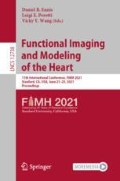Abstract
Intracardiac devices separate atrial arrhythmias (AA) from sinus rhythm (SR) using electrogram (EGM) features such as rate, that are imperfect. We hypothesized that machine learning could improve this classification.
In 71 persistent AF patients (50 male, 65 ± 11 years) we recorded unipolar and bipolar intracardiac EGMs for 1 min prior to ablation, providing 50,190 unipolar and 44,490 bipolar non-overlapping 4 s segments. We developed custom deep learning models to detect SR or AA, with 10-fold cross-validation, compared to classical analyses of cycle length (CL), Dominant Frequency (DF) and autocorrelation.
Classical analyses of single features were modestly effective with AUC ranging from 0.91 (DF) to 0.70 for other rate metrics. Performance increased by combining features linearly (AUC 0.991/0.987 for unipolar/bipolar), by Bagged Trees (0.995/0.991) or K-Nearest Neighbors (0.985/0.991). Convolutional deep learning of raw EGMs with no feature engineering provided improved AUC of 0.998/0.995 to separate AA from SR.
Deep learning of raw EGMs outperforms classic rule-based classifiers of SR or AA. This could improve device diagnosis, and the logic developed by deep learning could shed novel insights into EGM analyses beyond current classification based on EGM features and rules.
Access this chapter
Tax calculation will be finalised at checkout
Purchases are for personal use only
References
Hindricks, G., Pokushalov, E., Urban, L., et al.: Performance of a new leadless implantable cardiac monitor in detecting and quantifying atrial fibrillation: results of the XPECT trial. Circ. Arrhythm Electrophysiol. 3(2), 141–147 (2010)
Kaufman, E.S., Israel, C.W., Nair, G.M., et al.: Positive predictive value of device-detected atrial high-rate episodes at different rates and durations: an analysis from ASSERT. Heart Rhythm 9(8), 1241–1246 (2012)
Bertaglia, E., Blank, B., Blomstrom-Lundqvist, C., et al.: Atrial high-rate episodes: prevalence, stroke risk, implications for management, and clinical gaps in evidence. Europace 21(10), 1459–1467 (2019)
Tomson, T.T., Passman, R.: Management of device-detected atrial high-rate episodes. Card. Electrophysiol. Clin. 7(3), 515–525 (2015)
Krittanawong, C., Johnson, K.W., Rosenson, R.S., et al.: Deep learning for cardiovascular medicine: a practical primer. Eur. Heart J. 40(25), 2058–2073 (2019)
Topol, E.J.: High-performance medicine: the convergence of human and artificial intelligence. Nat. Med. 25(1), 4456 (2019)
Bumgarner, J.M., Lambert, C.T., Hussein, A.A., et al.: Smartwatch algorithm for automated detection of atrial fibrillation. J. Am. Coll. Cardiol. 71(21), 2381–2388 (2018)
Tison, G.H., Sanchez, J.M., Ballinger, B., et al.: Passive detection of atrial fibrillation using a commercially available smartwatch. JAMA Cardiol. 3(5), 409–416 (2018)
Rajpurkar, P.H.A., Haghpanahi, M., Bourn, C., Ng, A.: Cardiologist-Level Arrhythmia Detection with Convolutional Neural Networks (2017)
Alhusseini, M.I., Abuzaid, F., Rogers, A.J., et al.: Machine learning to classify intracardiac electrical patterns during atrial fibrillation: machine learning of atrial fibrillation. Circ. Arrhythm Electrophysiol. 13(8), (2020)
Rogers, A.J., Selvalingam. A., Alhusseini. M.I., et al: Machine learned cellular phenotypes predict outcome in ischemic cardiomyopathy. Circ. Res. (2020)
Author information
Authors and Affiliations
Corresponding author
Editor information
Editors and Affiliations
Rights and permissions
Copyright information
© 2021 Springer Nature Switzerland AG
About this paper
Cite this paper
Rodrigo, M., Pagano, B., Takur, S., Liberos, A., Sebastián, R., Narayan, S.M. (2021). Intra-cardiac Signatures of Atrial Arrhythmias Identified by Machine Learning and Traditional Features. In: Ennis, D.B., Perotti, L.E., Wang, V.Y. (eds) Functional Imaging and Modeling of the Heart. FIMH 2021. Lecture Notes in Computer Science(), vol 12738. Springer, Cham. https://doi.org/10.1007/978-3-030-78710-3_64
Download citation
DOI: https://doi.org/10.1007/978-3-030-78710-3_64
Published:
Publisher Name: Springer, Cham
Print ISBN: 978-3-030-78709-7
Online ISBN: 978-3-030-78710-3
eBook Packages: Computer ScienceComputer Science (R0)

